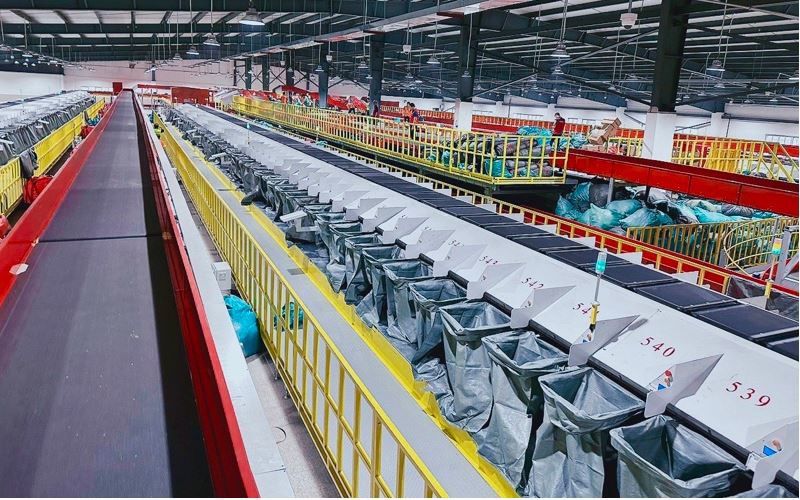Figures from the Ministry of Industry and Trade (MoIT) reveal that Vietnam’s logistics industry has grown at around 14-16 per cent annually in recent years, with the market size in 2024 estimated to have exceeded $45 billion. Notably, the World Bank (WB) ranked Vietnam 43rd out of 155 countries and territories in the Logistics Performance Index (LPI) and places it among the top 5 ASEAN countries, after Singapore, Malaysia, and Thailand, and level with the Philippines.
As the industry shifts towards digital and green solutions, the advent of Industry 4.0 presents a unique opportunity for Vietnam to elevate its logistics capabilities. To fully capitalize on this potential, a unified, collaborative effort is essential, requiring close coordination between all stakeholders involved.
Path to modernization
According to Dr. Bui Ba Nghiem, Senior Expert with the Agency of Foreign Trade at MoIT, Vietnam’s logistics infrastructure has seen substantial improvements, gradually evolving to meet the growing demands of the industry. The number of logistics service providers has also surged, with increasing business capacity and enhanced service quality. The logistics market is constantly expanding, capitalizing on the advantages offered by free trade agreements (FTAs), which have fueled Vietnam’s integration into the global economy.
Technology is also making its mark, with innovative solutions being integrated into logistics operations. Over time, the country has developed a stronger legal framework to regulate the industry, while the number of educational programs in logistics has grown, enhancing both quantity and quality.
However, Dr. Nghiem pointed out that challenges remain. The legal framework is still underdeveloped, and there is no cohesive, nationwide policy to drive sustainable logistics development. Additionally, efforts to coordinate and implement national logistics strategies have faced significant hurdles.
Infrastructure, though improving, remains fragmented, with limited connectivity between trade, transport, and information technology (IT) infrastructure. This disjointed development has contributed to high logistics costs, which currently account for 16-20 per cent of GDP; well above the global average and hampering the competitiveness of Vietnamese logistics providers. These high costs directly impact product pricing and the overall competitiveness of businesses in the import-export sector.
Small and medium-sized enterprises (SMEs) dominate the logistics services market, but many are still struggling with limited capital, outdated technology, and insufficient skilled workers. The adoption of digital and green technologies is also lagging behind, with many businesses unable to invest in digital transformation or sustainability initiatives. There is also a shortage of technical guidance for different business models and a lack of clear legal regulations and incentives to promote growth in the industry.
Meanwhile, the logistics workforce faces a dual challenge of being both insufficient in number and lacking the necessary expertise to meet the demands of an increasingly professional, globalized industry. “Vietnam still lacks a comprehensive strategy for national logistics development,” Dr. Nghiem said. “The government and associations have only a limited role in guiding the industry.”
Logistics infrastructure in the northern midlands remains fragmented, with an overreliance on road transport, which accounts for 70-75 per cent of logistics activity. According to Ms. Truong Thi Mui, Deputy General Director of the Bac Giang International Logistics Company, this reliance results in high costs and instability. Despite the potential rail and inland waterway transport hold, these alternatives remain underutilized. Many industrial parks also lack modern, standardized warehousing systems, limiting their operational efficiency, while there is little coordination between warehouse operations and the supply chain data that could streamline processes.
Regarding inland waterway transport, Ms. Mui explained that infrastructure is fragmented, with shallow, silt-filled waterways and an absence of a cohesive network connecting ports, logistics centers, and transportation routes. The industry also lacks policies to promote the use of waterway transport, further hindering its growth potential.
Tapping potential
Vietnam’s logistics industry is on the cusp of tremendous growth, with the potential to become one of the country’s leading economic drivers, contributing significantly to overall economic development. However, for long-term success, Dr. Nghiem believes that a unified strategy is essential, one that includes infrastructure investments, workforce enhancements, technology integration, and legal reforms.
The MoIT is currently finalizing Vietnam’s Logistics Development Strategy for 2025-2035, with a vision extending to 2045. The goal is to minimize logistics costs while achieving an annual industry growth rate of 15-20 per cent. Logistics will also be integrated into the National Green Growth Strategy, with targets including a 30 per cent shift to clean energy vehicles and 80 per cent of businesses adopting digital transformation.
As Vietnam’s logistics industry enters this new phase, Dr. Nghiem emphasized that e-commerce, digital transformation, and green growth cannot thrive without logistics evolving in tandem. Logistics companies must play a proactive role, moving beyond traditional support services. Vietnam needs to develop a modern logistics ecosystem tightly integrated with global supply chains. The two strategic pillars, including digital logistics and green logistics, will be key to optimizing costs, boosting competitiveness, and expanding market access.
From a business perspective, Mr. Pham Nguyen Thanh Quang, Director of LEX Vietnam (formerly Lazada Logistics), said logistics has evolved into a high-tech service industry in the Industry 4.0 era. LEX Vietnam has fully embraced cutting-edge technologies such as AI, big data, the Internet of Things (IoT) sensors, and supply chain management systems to automate processes and enhance the user experience. “Our AI system is integrated throughout various stages, from order forecasting and optimizing delivery routes to warehouse management and analyzing consumer behavior,” he explained. “Digital transformation not only reduces costs and accelerates processing but also extends service capabilities to remote areas.”
Highlighting the importance of integrating multi-modal transport with smart warehouse systems, Ms. Mui pointed out that the northern midlands region has the advantage of connecting road, waterway, and railway networks, but these are still developing independently. Synchronizing and building a multi-layered supply chain would reduce logistics costs by 10-15 per cent for key industries such as e-commerce, electronics, and textiles. Policies should therefore be developed to promote investment in transport infrastructure connections, support businesses in applying technology systems for warehouse management, and facilitate the development of smart warehouses under international standards.
On the green logistics front, Mr. Cap Trong Cuong, General Director of the Macstar Group, emphasized that “green logistics is no longer a choice but a necessity for Vietnam’s participation in global supply chains. Multinational companies are setting stringent standards for emissions and environmental impact.” Macstar is leading the way in inland waterway transport, using barges to connect Hai Phong with north-central provinces, which reduces emissions by 70 per cent compared to road transport. The company is also investing in smart warehouses powered by renewable energy and exploring reforestation efforts to generate carbon credits.
To further drive investment in waterway transport, reduce emissions, and lower the cost of carbon credit generation, Mr. Cuong proposed waiving 100 per cent of port infrastructure fees for container goods transported by inland waterway until 2030 or until the share of inland waterway transport reaches 25 per cent.









 Google translate
Google translate